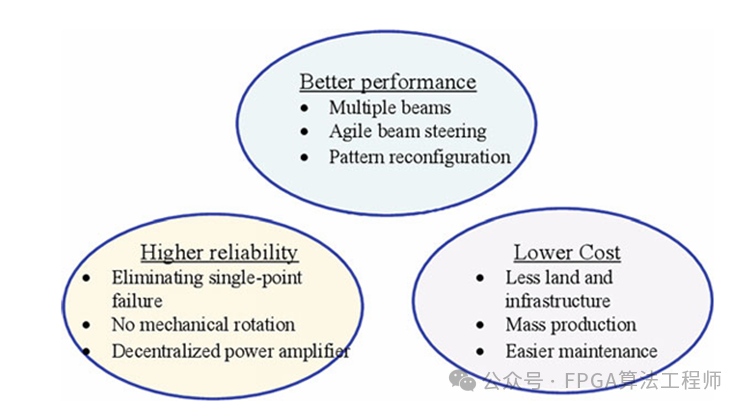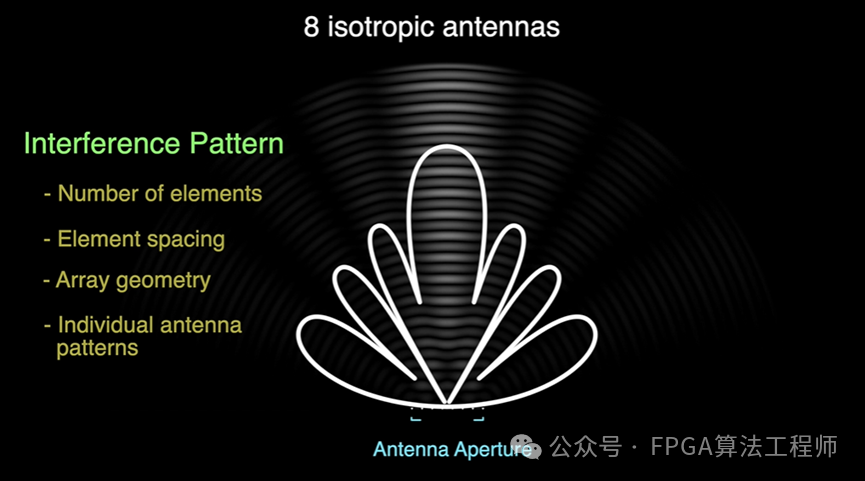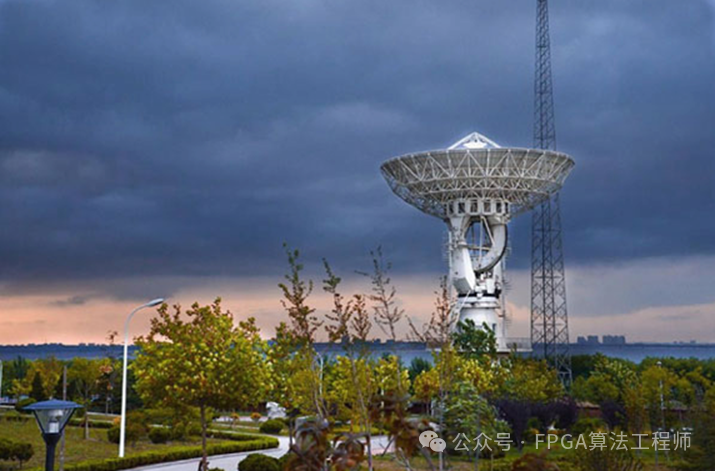Advantages of Phased Array Antennas in Satellite Ground Stations
![]() 02/19 2025
02/19 2025
![]() 364
364
1. Technical Background
Phased array antenna technology represents an advanced system that electronically adjusts the direction and shape of antenna beams. Widely employed in radar, communications, and electronic warfare, it encompasses two core techniques: beamforming and phase control.
Beamforming
Phased array antennas consist of multiple elements, each independently controlling the signal's phase and amplitude. By manipulating phase differences among these elements, electromagnetic waves are coherently enhanced in specific directions while canceling out in others, enabling directional beam transmission or reception.
Phase Control
Phase shifters adjust the phase delay of each element, altering the wavefront's propagation direction. For instance, incrementally increasing the phase difference between adjacent elements steers the beam towards the side with greater delay.
Formula: The relationship between beam pointing angle and phase difference is given by:
where is the element spacing and is the wavelength.
2. Advantages of Phased Array Antennas in Satellite Ground Stations
With the evolution of satellite internet technology, phased array antennas are increasingly being integrated into satellite payloads, terminals, and ground stations.
Compared to parabolic antennas traditionally used in satellite ground stations, phased array antennas offer several advantages. As illustrated in Figure 1, these advantages encompass enhanced performance, heightened reliability, and reduced costs.

Figure 1: Advantages of Phased Array Antennas in Satellite Ground Stations
a. Better Performance
Multi-beam Capability: Parabolic antennas typically support a single beam at a time. In contrast, phased array antennas can theoretically generate any number of beams based on beamforming network requirements (limited by hardware capacity). Early analog beamforming for phased arrays involved complex connections and interfaces requiring stringent microwave parameters. However, advancements in digital beamforming (DBF) technology have simplified the process, allowing for easy replication and combination of digitized data from antenna elements.
Agile Beam Control: Parabolic antennas rely on mechanical drive systems to manipulate the parabolic surface and direct beams. Satellites in low Earth orbit move swiftly, necessitating rapid beam steering. Mechanical systems can struggle to keep pace, sometimes losing track of satellites. Reorienting a parabolic antenna to track another satellite in a different direction can take several minutes. In contrast, phased array antennas electronically control beam direction by adjusting element phase shifts, a process that occurs in milliseconds.
Pattern Reconfiguration: Due to their parabolic reflector surface, parabolic antennas produce pencil beams with limited sidelobe reduction capabilities. The first sidelobe level (SLL) can be as high as -13 dB, potentially causing tracking errors. Phased array antennas, through amplitude tapering and phase control, can effectively manage SLL and create nulls in interference directions.

Figure 2: Phased Array Interference Pattern
b. Higher Reliability
Elimination of Single Points of Failure: Parabolic antennas have potential single points of failure that can render an entire ground station inoperable. In contrast, phased array antennas, even when some elements fail, experience only partial performance degradation without losing functionality.
No Mechanical Rotation: Fixed in structure, phased array antennas do not require mechanical rotation, making them more stable than parabolic antennas, whose motors and servos are prone to wear and tear.
Distributed Power Amplifiers: Parabolic antennas use centralized high-power amplifiers, typically requiring hundreds of watts. Phased array antennas, however, feature individual power amplifiers for each element, consuming only a few watts, providing a more reliable decentralized model.
c. Lower Costs
Reduced Land and Infrastructure Requirements: Supporting multiple missions with reflective antennas necessitates vast land areas, numerous antenna pedestals, and extensive infrastructure. Phased array antennas, capable of simultaneously generating multiple beams, reduce these demands.
Mass Production: Historically, phased array antennas' high cost and complexity hindered commercial adoption. However, recent advancements in manufacturing, mass production, and the use of commercial off-the-shelf (COTS) components have significantly lowered costs. Advanced integration technology has also reduced transmit/receive (T/R) module costs, and multi-layer RF board area and connector/cable counts have been minimized.
Easier Maintenance: Reflector antenna maintenance is complex, often requiring downtime, specialized tools, and highly skilled workers. In contrast, phased array antenna elements can be easily replaced without disrupting operations, simplifying maintenance and reducing life cycle costs.
Technical Challenges
While parabolic antennas have long been the standard in satellite ground stations, phased array antennas, while widely used in radar, are still in their infancy for satellite constellations. Several technical challenges must be addressed before widespread adoption. Personally, I believe phased array antennas will eventually replace parabolic antennas in satellite ground stations, but the aerospace industry remains cautious. Even recent LEO satellite constellation projects continue to employ traditional parabolic antennas.

Figure 3: 18-meter Diameter Parabolic Reflector Antenna
For phased array antenna engineers, mastering fundamental principles and theories, including architecture evolution, main components, and array pattern synthesis, is crucial. Addressing array excitation errors involves probabilistic and interval arithmetic analysis, state-of-the-art calibration schemes, and innovative signal processing techniques. Additionally, design considerations for satellite ground station applications include array geometry for hemispherical coverage, multi-beam resource management, and air-to-ground link analysis.








